When planning with LED luminaires and LED lamps, the maintenance factor
MF = LLMF · LSF · LMF · RMF
When planning with LED luminaires and LED lamps, the maintenance factor
MF = LLMF · LSF · LMF · RMF
introduced in the last chapter must be considered. Here, the factors LLMF and LSF describe the ratio of the light source to the maintenance factor in analogy to the lamp maintenance factor (LaMF, see section ) of discharge lamps.
The lamp lumen maintenance factor LLMF considers the average decrease in luminous flux of the LED light source. It corresponds to the residual luminous flux available at the end of the estimated period of use for planning due to LED light source degradation. Where the planned total period of operation of the lighting installation (from duration of use up until decommissioning) corresponds with the rated service life Lx specified by the manufacturer, the following applies:

The index "x" by definition represents the LLMF at the end of the average rated service life Lx in per cent (see also chapter ).
Where the planned period of operation deviates from the rated service life, the lamp lumen maintenance factor LLMF can be calculated within certain limits (see chapter "Service life of LED luminaires"). Lamp lumen maintenance factor LLMF values can be taken from the tables on the following pages for customary data of the rating classes Lx.
The second influence factor of the light source, the lamp survival factor LSF, is determined by the failure rate z (see chapter "Service life of LED luminaires") at the end of the estimated period of use Cz (e. g. Cz = Lx) for LED light sources. Usually it is only relevant when high degradation, meaning a lower x value for the rated service life Lx to be considered, is achieved.
The index "z" in the failure rate Cz specifies the failure rate to be expected at a predetermined point in time as a percentage. The failure rate is related to the lamp survival factor LSF:

The values for the lamp survival factor LSF can also be taken from the following tables.
Furthermore, the tables contain a value LaMFcombined in every third row. It is the product of LLMF and LSF and hence the lamp maintenance factor LaMF to be considered during planning, unless failed light sources are replaced immediately, meaning a group replacement is supposed to take place:
LaMF = LLMF · LSF = LaMFcombined
Where failed light sources are replaced individually, the lamp maintenance factor LaMF can be equated with the lamp lumen maintenance factor LLMF:
LaMF = LLMF
Other tables consider the possibility of compensating LED light source degradation using an electronically controlled increase in power consumption of the light source, referred to as constant light output (CLO). Within the confines of the specified rated service life, these luminaires or light sources can be planned with lamp lumen maintenance factor LLMF = 1. However, the time-dependent increase in power consumption must be considered regarding energy consumption during planning. This is identified in the tables using the value PLF (power lifetime factor). For the energy consumption of a luminaire of this kind from initial state until a point in time t within its rated service life, the following applies:

(See chapter "Rated service life with constant light output".)
If the rated service life is exceeded, a luminous flux degradation can – within certain limits – be assumed with fixed maximum power consumption for the subsequent time (see chapter "Rated service life with constant light output"). Correspondingly, the resulting LLMF < 1 must be considered.

Figure 3.31: Luminous flux, connected electric power and energy savings due to CLO. Exemplary comparison of a luminaire with CLO and an equivalent luminaire without CLO (L70=50.000h).
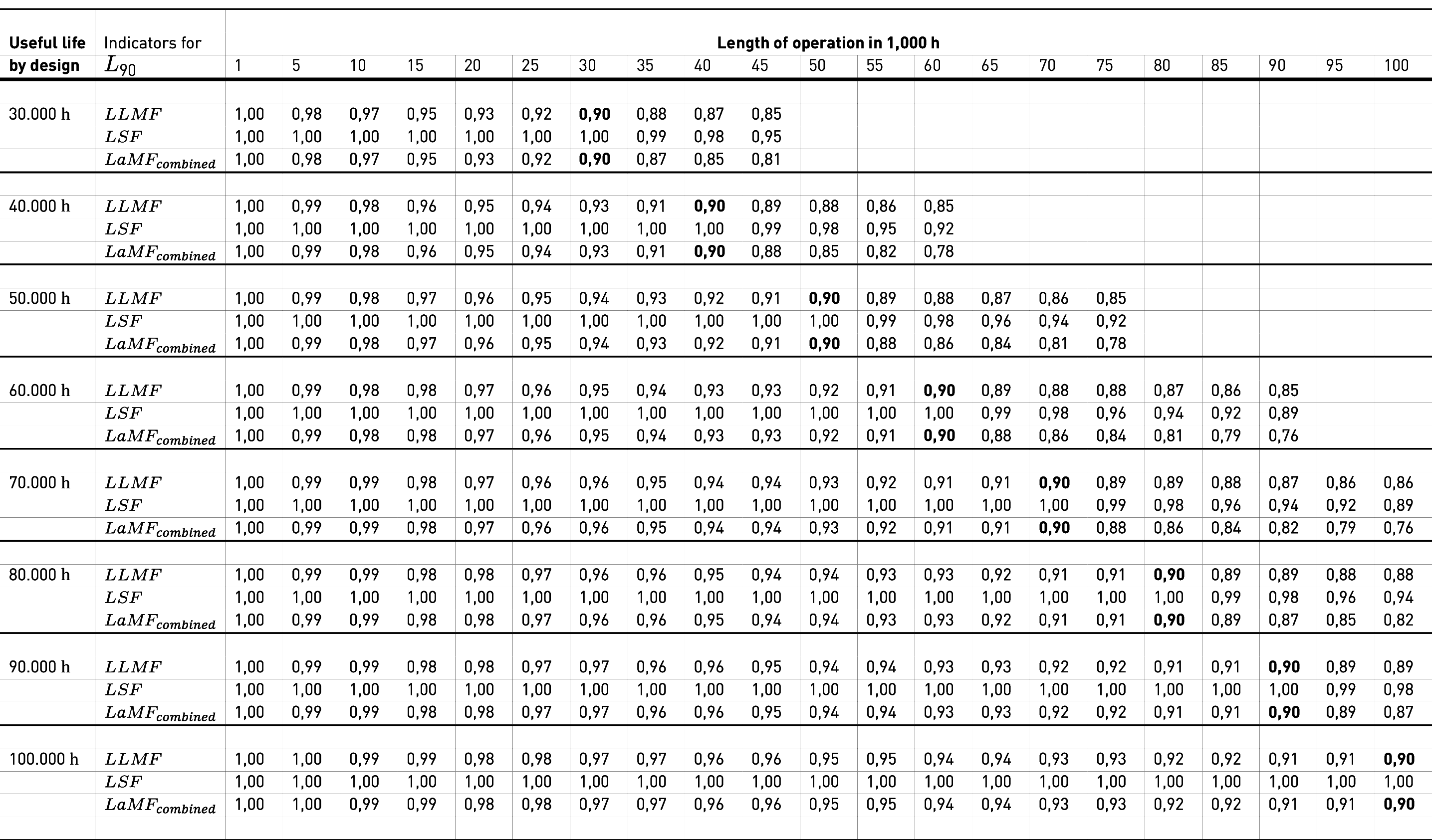
Table 3.14: The value " L90" refers to a luminous flux degradation in an LED unit to 90% of its initial value before the end of the "rated service life". This results in a time-dependent lamp lumen maintenance factor of 0,9 for this point in time. This is at once the lamp maintenance factor for individual replacement (LLMF). It must be multiplied with the lamp survival factor (LSF) to obtain the combined lamp maintenance factor for group replacement (LaMFcombined = LLMF · LSF).
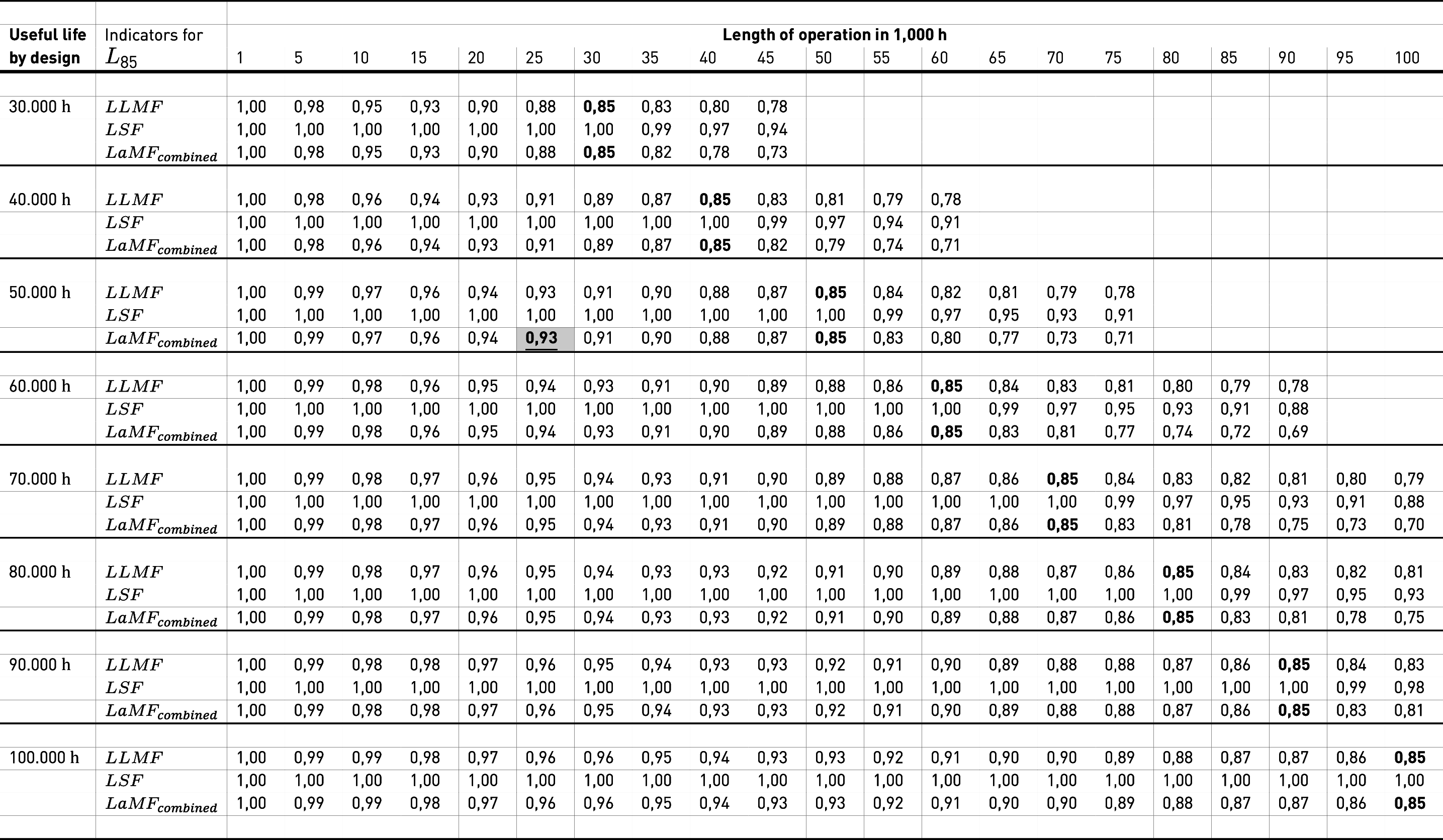
Table 3.15: The value "L85" refers to a luminous flux degradation in an LED unit to 85% of its initial value before the end of the "rated service life". This results in a time-dependent lamp lumen maintenance factor of 0,85 for this point in time. This is at once the lamp maintenance factor for individual replacement (LLMF). It must be multiplied with the lamp survival factor (LSF) to obtain the combined lamp maintenance factor for group replacement (LaMFcombined = LLMF · LSF).
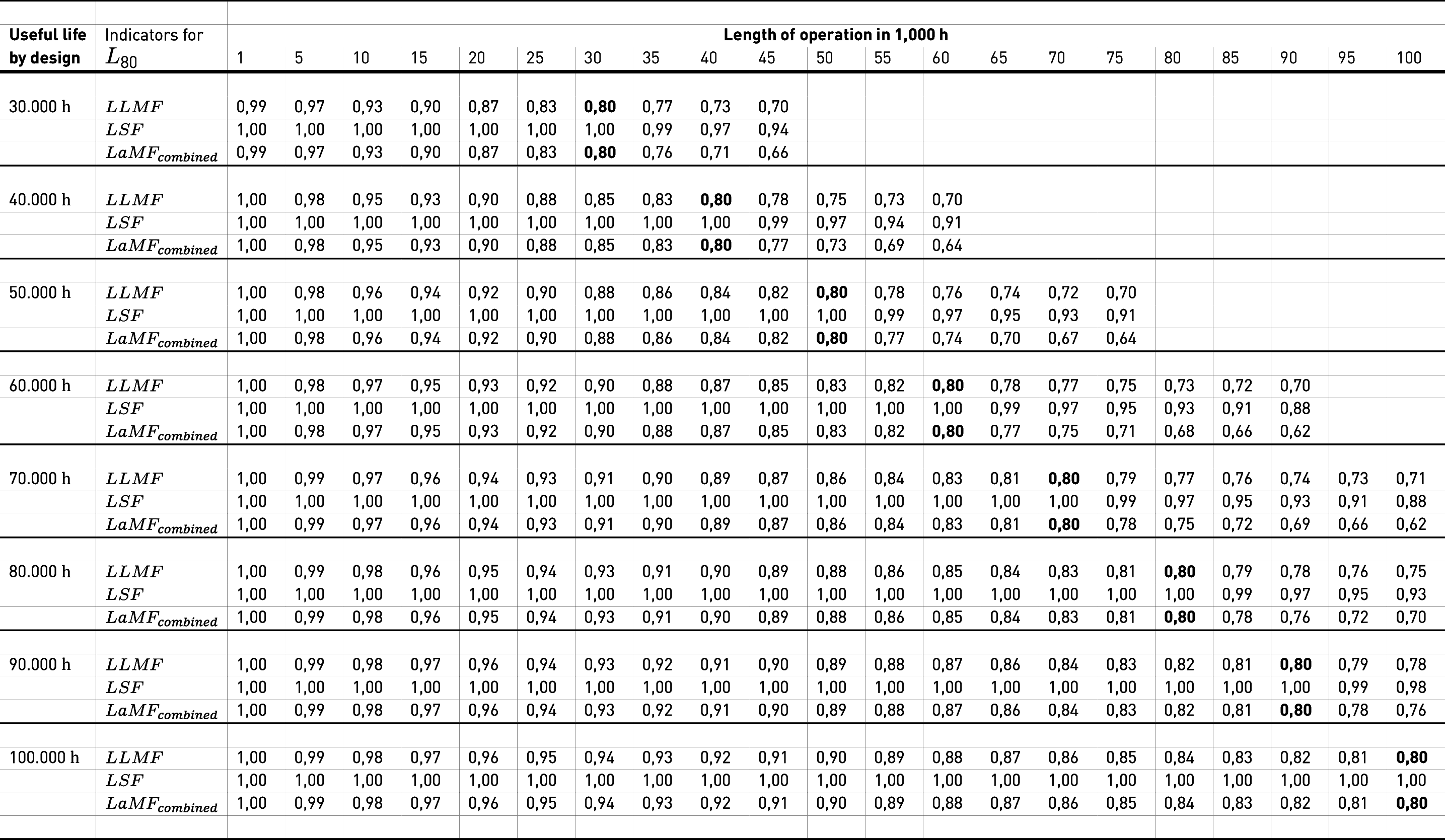
Table 3.16: The value "L80" refers to a luminous flux degradation in an LED unit to 80% of its initial value before the end of the "rated service life". This results in a time-dependent lamp lumen maintenance factor of 0,8 for this point in time. This is at once the lamp maintenance factor for individual replacement (LLMF). It must be multiplied with the lamp survival factor (LSF) to obtain the combined lamp maintenance factor for group replacement (LaMFcombined = LLMF · LSF).
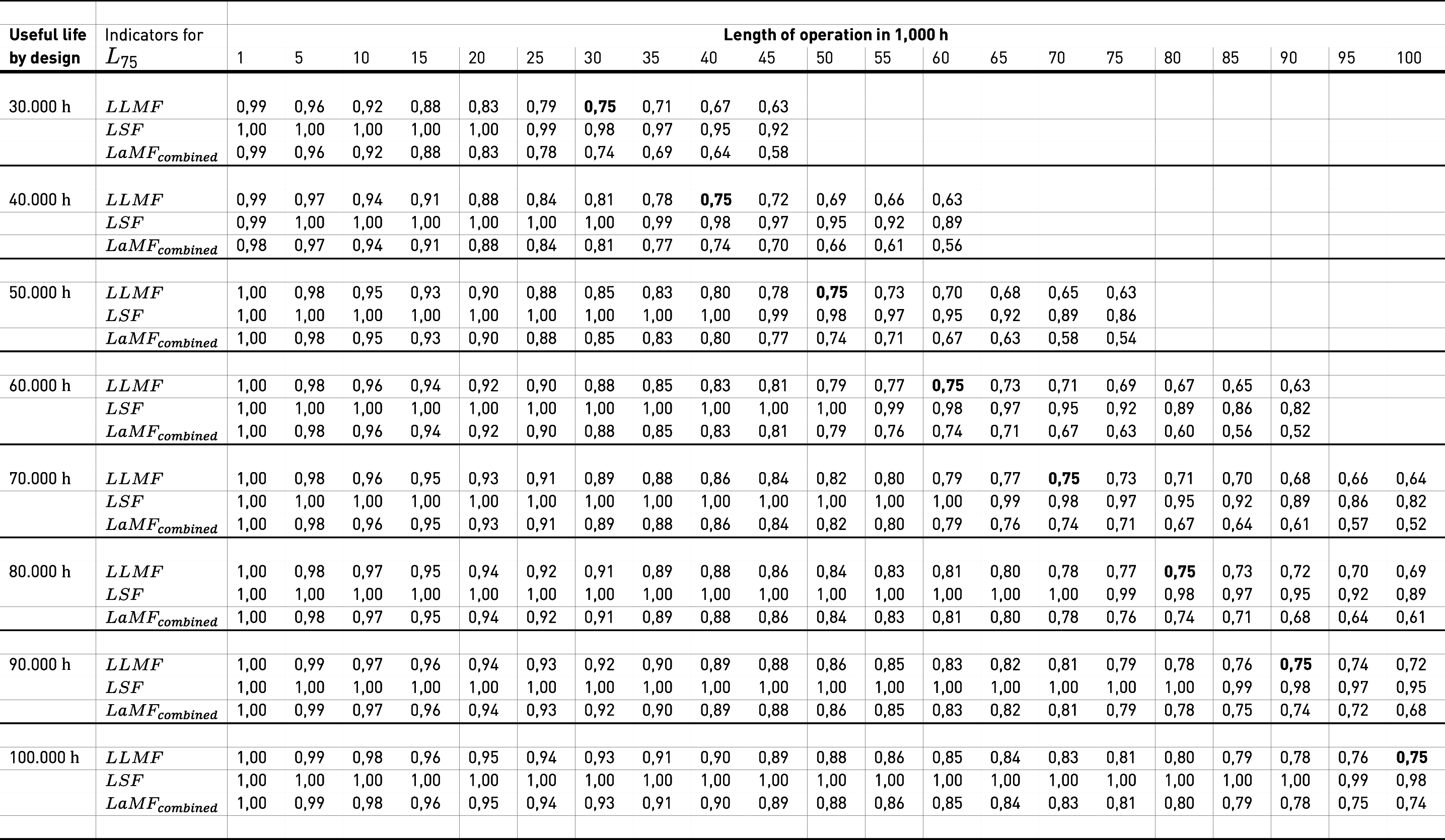
Table 3.17: The value "L75" refers to a luminous flux degradation in an LED unit to 75% of its initial value before the end of the "rated service life". This results in a time-dependent lamp lumen maintenance factor of 0,75 for this point in time. This is at once the lamp maintenance factor for individual replacement (LLMF). It must be multiplied with the lamp survival factor (LSF) to obtain the combined lamp maintenance factor for group replacement (LaMFcombined = LLMF · LSF).
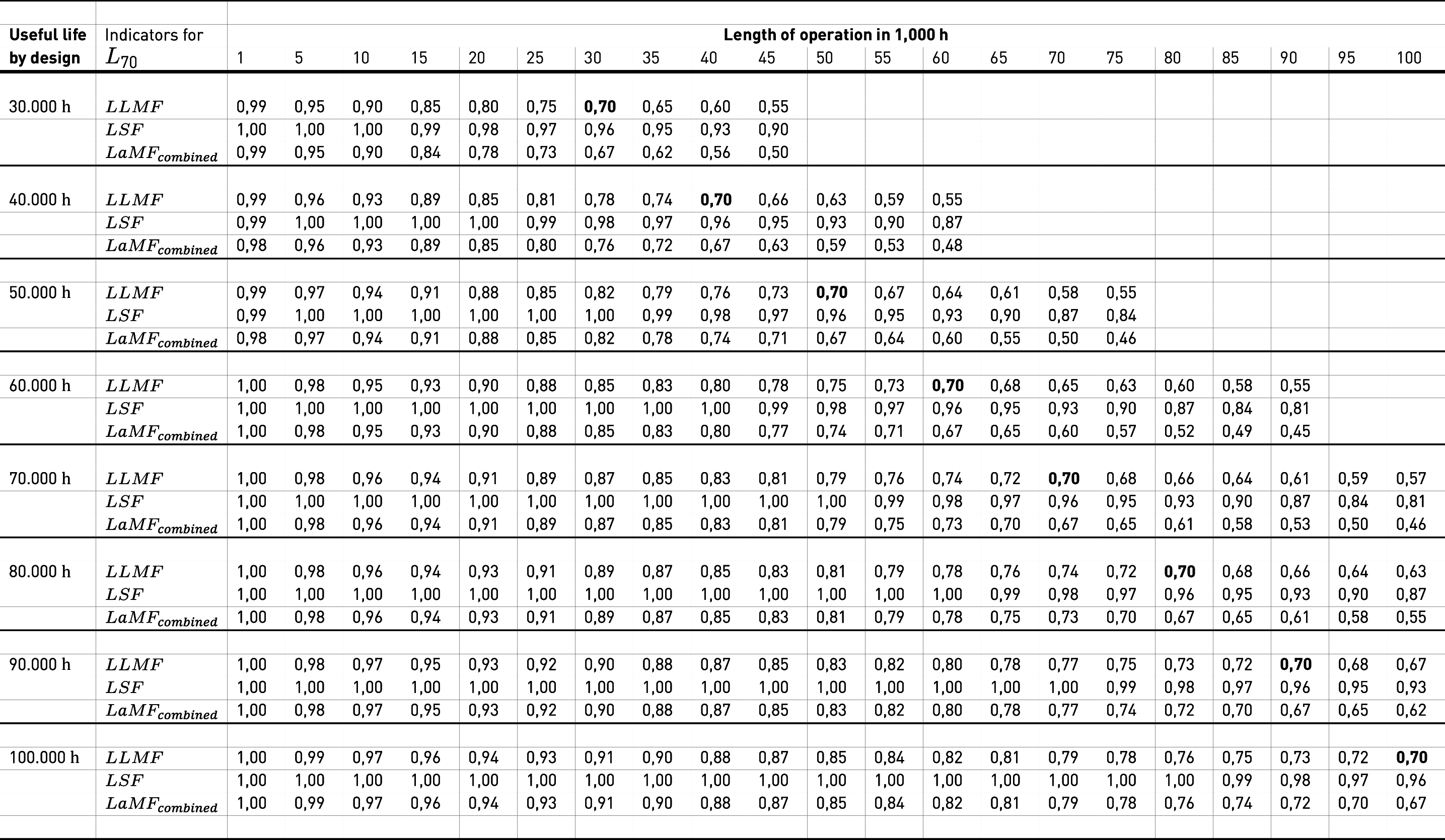
Table 3.18: The value "L70" refers to a luminous flux degradation in an LED unit to 70% of its initial value before the end of the "rated service life". This results in a time-dependent lamp lumen maintenance factor of 0,7 for this point in time. This is at once the lamp maintenance factor for individual replacement (LLMF). It must be multiplied with the lamp survival factor (LSF) to obtain the combined lamp maintenance factor for group replacement (LaMFcombined = LLMF · LSF).
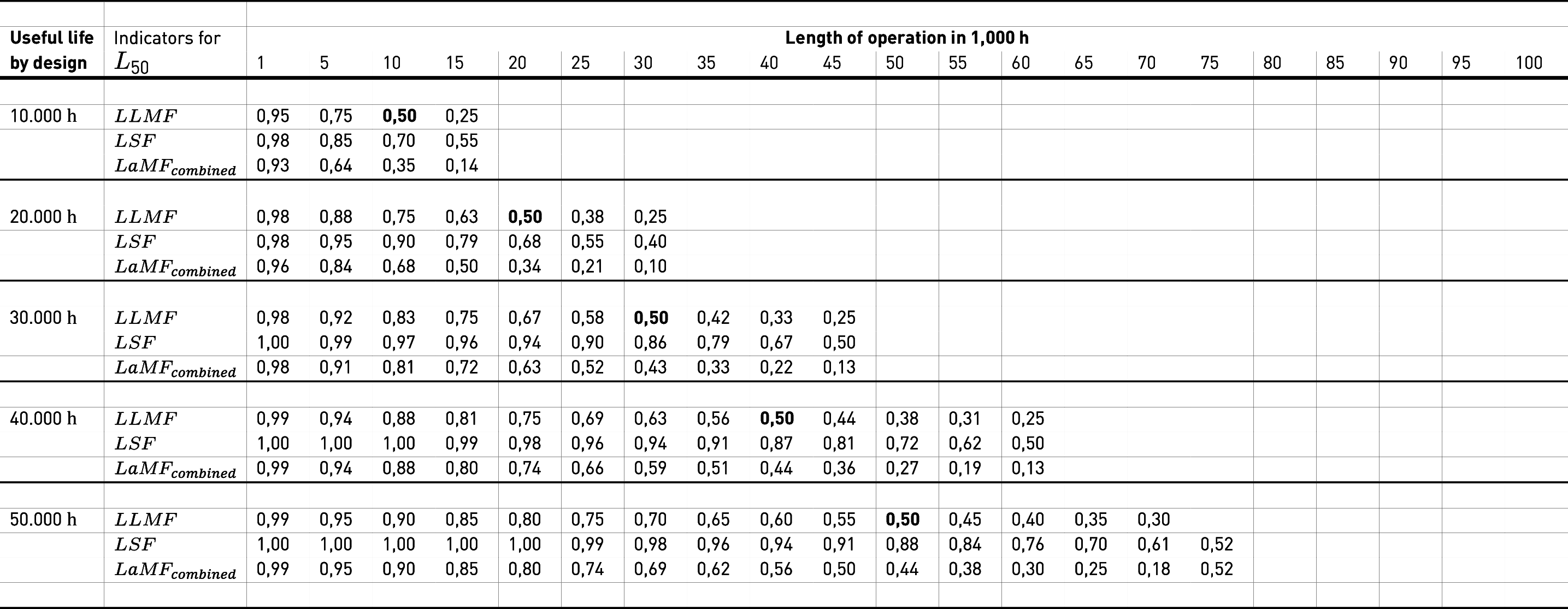
Table 3.19: The value "L50" refers to a luminous flux degradation in an LED unit to 50% of its initial value before the end of the "rated service life". This results in a time-dependent lamp lumen maintenance factor of 0,5 for this point in time. This is at once the lamp maintenance factor for individual replacement (LLMF). It must be multiplied with the lamp survival factor (LSF) to obtain the combined lamp maintenance factor for group replacement (LaMFcombined = LLMF · LSF).
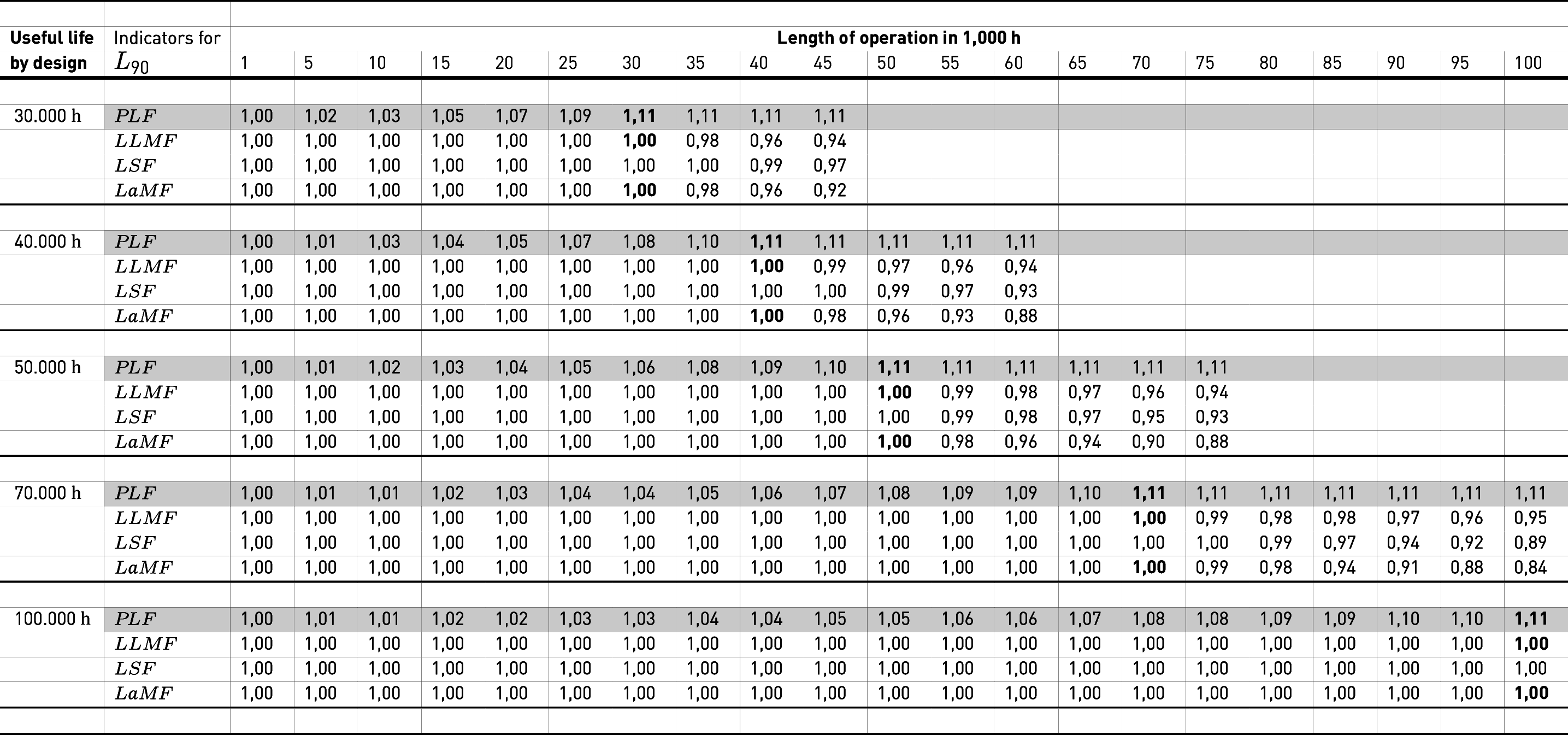
Table 3.20: Power lifetime factors PLF for LED lighting installations with constant light output
Note: The constant light output technology is designed to the specified rated service life. It is intended to reduce the energy input for the technology-related decrease in luminous flux of LED luminaires by reducing the maximum possible luminous flux of a luminaire or the rated luminous flux typically specified in data sheets for an identical luminaire without constant light output so that the lighting installation requires correspondingly less electrical power at the start of operation. In order to keep the luminous flux constant over the specified rated service life, the electrical power must be increased continuously over time until the rated service life is achieved. This increase dependent on the period of operation is illustrated in the following table. The quality criteria of lighting installations, e.g. illuminance or luminance values, must be achieved at least with the luminous flux kept constant. With constant light output technology, the performance remains constant after reaching the rated service life and the luminous flux of the luminous of the luminaires or the lighting installation decreases. The decrease in luminous flux after reaching the rated service life is documented in the previous tables.
Approach: The existing luminaire performance in its initial state directly after the installation of luminaires with constant light output must be multiplied with the PLF factors specified in the tables in order to receive the corresponding value for power consumption in the luminaire for the respective point of the operating period.
Until the rated service life is reached, the average power consumption is as follows:

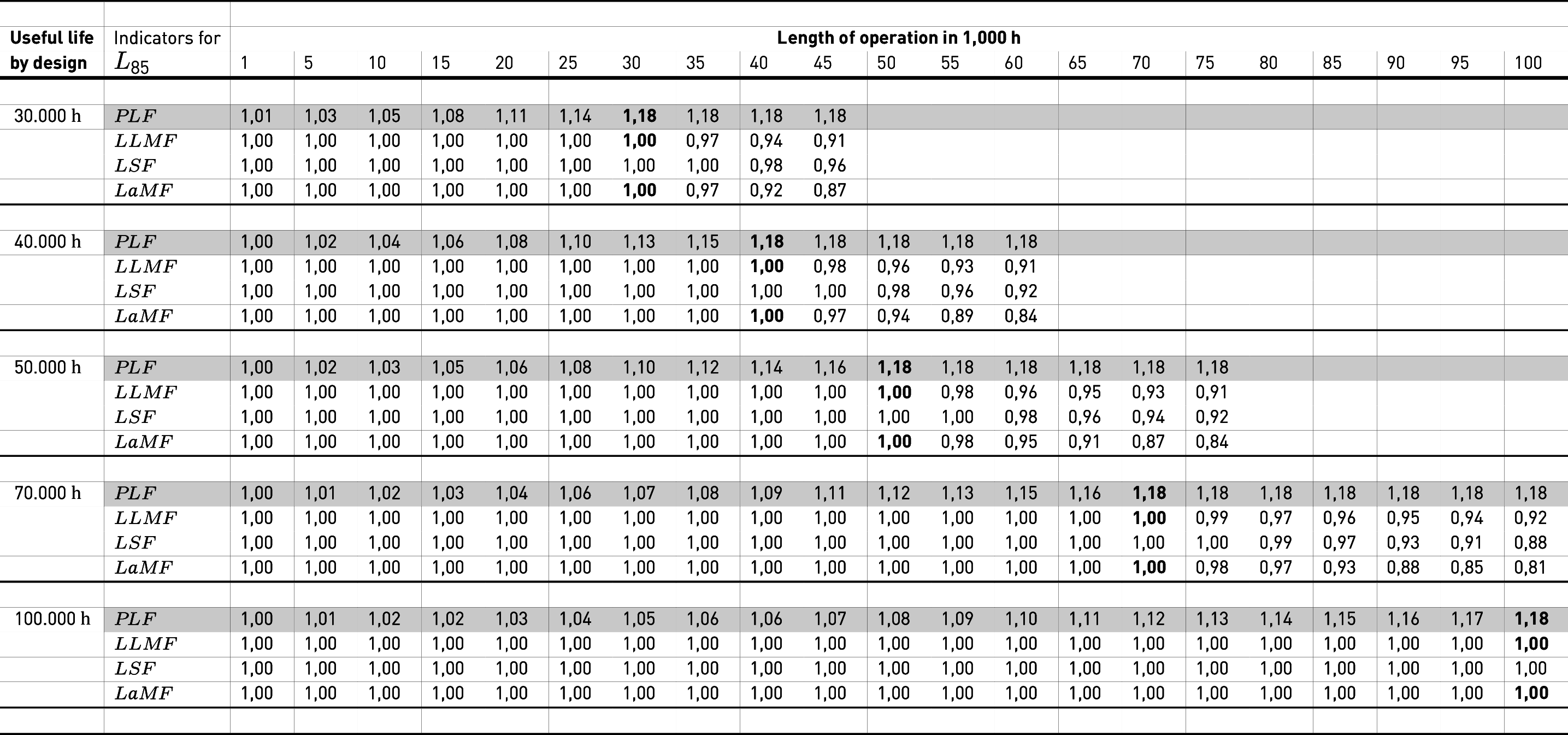
Table 3.21: Explanation see table
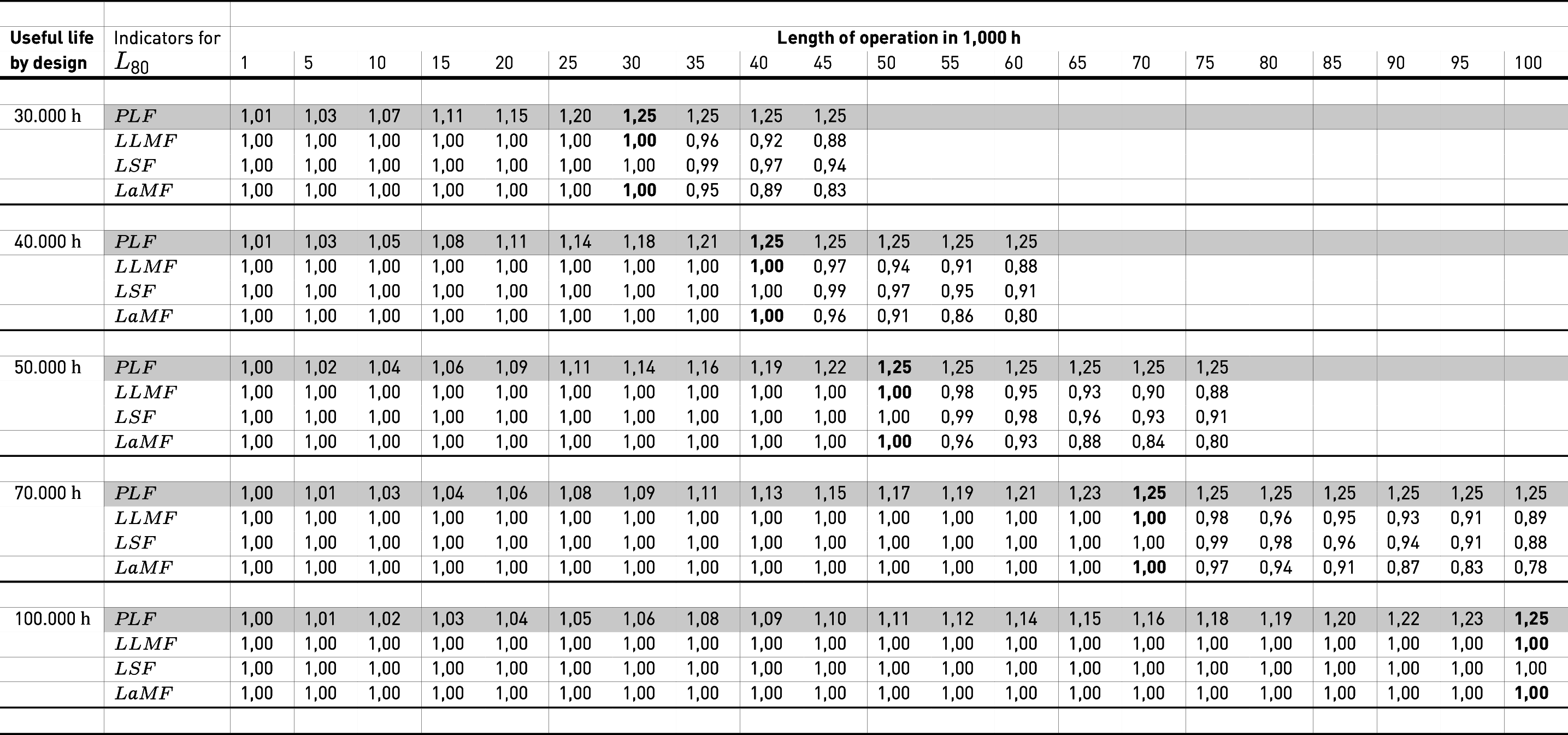
Table 3.22: Explanation see table
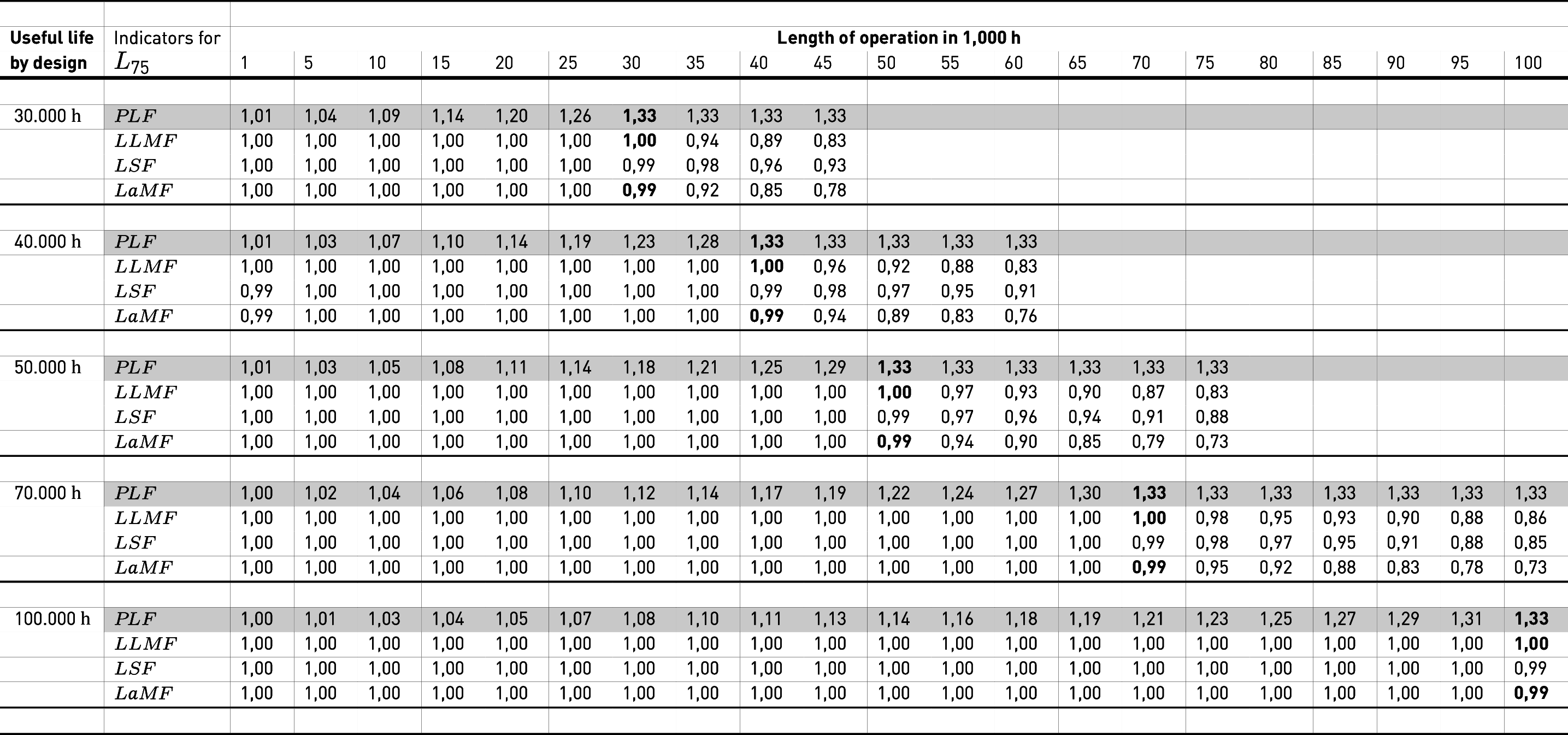
Table 3.23: Explanation see table
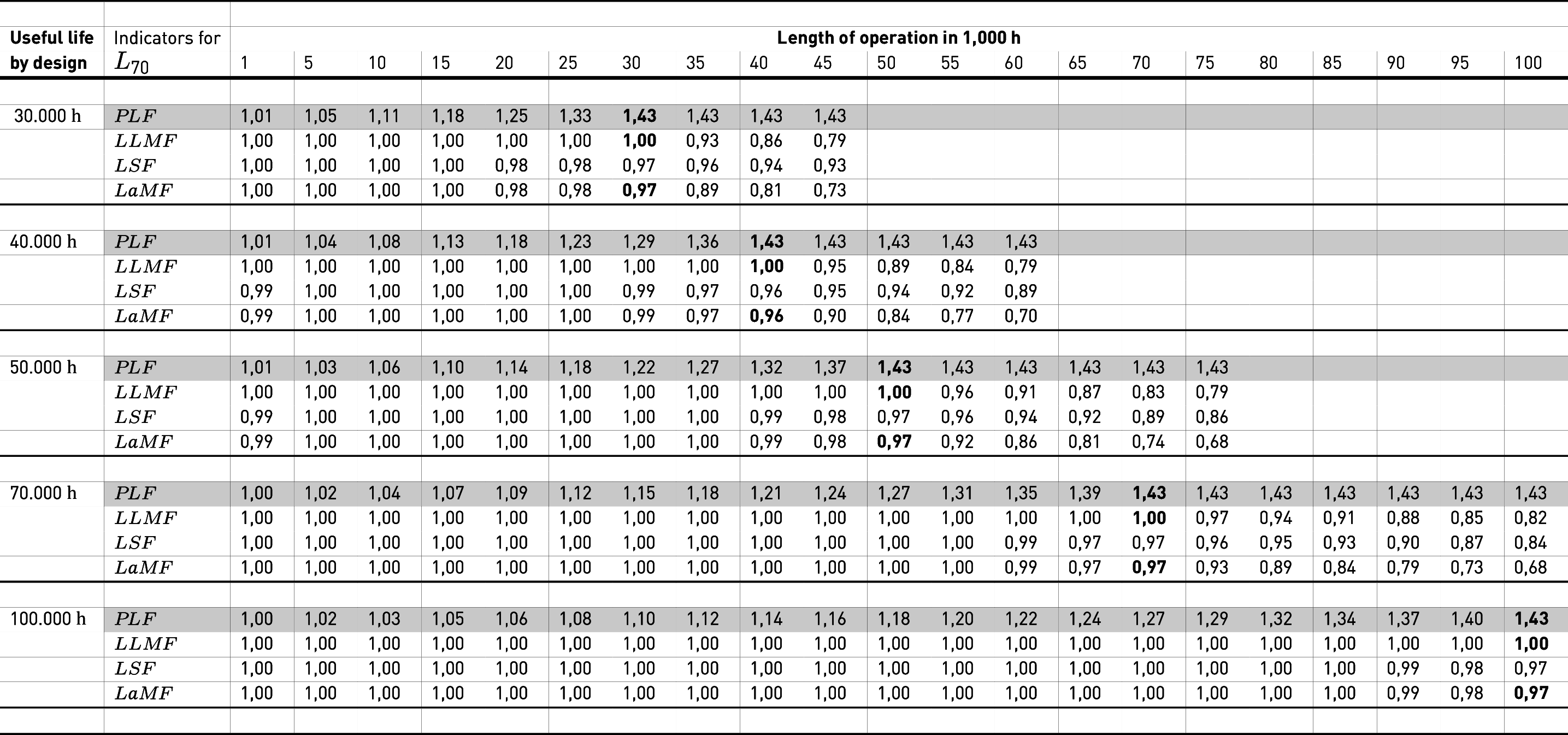
Table 3.24: Explanation see table